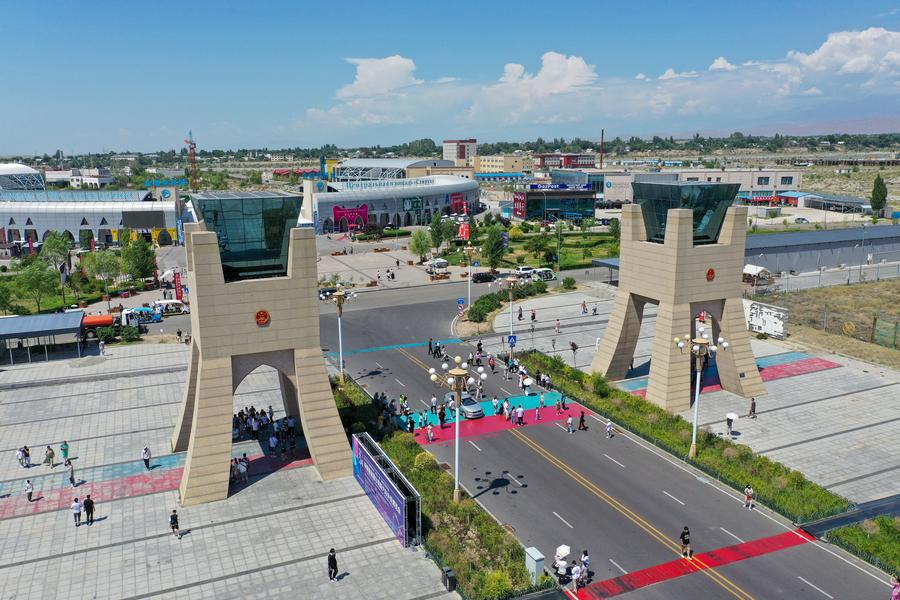Strategic location positions Urumqi as gateway for China's opening-up

Urumqi, capital of the Xinjiang Uygur autonomous region, has leveraged its strategic geographical advantages and robust policy support to establish itself as a pivotal hub for China's westward opening-up efforts.
In recent years, the city in Northwest China has intensified its efforts to align with regional development plans and integrate with national frameworks such as the Belt and Road Initiative.
The establishment of the China (Xinjiang) Pilot Free Trade Zone in November 2023 marked a significant milestone as the first free trade zone in China's northwestern border regions. This pilot FTZ includes three key areas in Urumqi, Kashgar and Horgos.
READ MORE: China plans Xinjiang FTZ for high-quality development in future
The Urumqi area, covering just 1 percent of the city's total area, has delivered outsize results — contributing to 59.5 percent of the city's foreign trade.
"Urumqi now enjoys a steaming development vitality, as the city has been strengthening its efforts in promoting opening-up," said Shi Fang, deputy director of Urumqi's development and reform commission.
"The FTZ's Urumqi area has completed over 230 reform tasks to foster greater growth momentum," Shi said.
Since the beginning of this year, the Urumqi area has initiated 41 institutional innovations, with seven of them focusing on improving logistics efficiency and reducing costs.
Sun Xiaoyu, deputy director of the Urumqi High-Tech Industrial Development Zone, said the Urumqi area of the Xinjiang pilot FTZ has been stepping up efforts to improve cross-border logistics services. For example, it has streamlined the documentation process for the intermodal transportation method that links both railway and air routes.
Under the intermodal service framework, goods from Guangdong province are initially shipped by railway to Urumqi and then transported by air to other countries. The streamlined documentation process will help reduce the total transport time to around five days, a substantial improvement compared with the 30 days required by freight trains and 60 days by sea.
"Currently, some enterprises have also expressed interest in setting up operations in the area, either by establishing warehouses or building assembly factories, to reduce their production and logistics costs. These moves would, in turn, create new jobs and further strengthen industrial integration in the region," he added.
Data showed that from January to July, the Urumqi area achieved a foreign trade value of 35.15 billion yuan ($4.9 billion), marking a 31.8 percent increase year-on-year and contributing to 58.4 percent of Urumqi's foreign trade.
Since the establishment of the Xinjiang FTZ, the region's import and export trade volume has grown at an annual rate of 20 to 30 percent, one of the highest in the country.
Contact the writer at jihaisheng@chinadaily.com.cn


